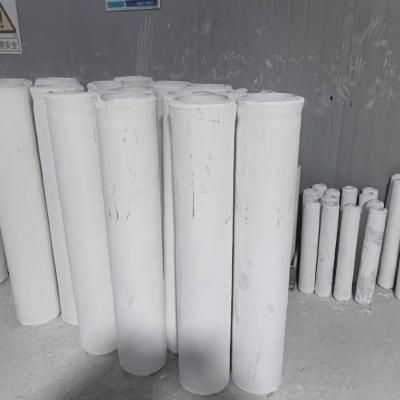
Technological material demonstrate remarkable morphological attributes, rendering them advantageous for a diverse set of applications. Sprouting from outer space and vehicles to technology, these ceramics are regularly transforming to meet the expectations of a innovative world.
- Their strength and tolerance to drastic atmospheres make them paramount for state-of-the-art units.
- Furthermore, technical ceramics furnish edges in terms of longevity, boosting the expansion of advanced technologies.
Crafting Composites: Created for Unmatched Effectiveness
Crafted ceramics shine in challenging tasks due to their extraordinary features. Formed from handpicked raw components and subjected to strict processing procedures, these high-tech compounds exhibit remarkable strength, degradation resistance, and endurance to demanding environmental conditions, chemical attack, and scraping. From space ingredients to carving tools, industrial ceramics contribute superior quality across multiple areas. Their flexibility allows withstanding extreme places, affirming durability and steadfastness. As improvement progresses, the necessity for advanced compounds grows, cementing the fundamental stance of industrial ceramics in shaping a robust future.
High-Tech Ceramics: Breaking Compound Thresholds
Elements, boasting outstanding sturdiness and resilience, are engaged in a upheaval. Modern ceramics, formulated with diligent control over their configuration and minute arrangement, surpassing the barriers of that which is possible. These forms carry a comprehensive assortment of features, considering them perfect for hard fields such as flight, healthcare, and energy. From slender parts that hold up under extreme thermal states to medical-grade implants that bond tightly with the physiology, advanced ceramics are remodeling our environment.
Precise Ceramic Assembly: Handling Rigid Specifications
Technical ceramic fabrication has improved decisively in recent cycles, allowing the design of complex and highly efficient ceramic products. These pieces are indispensable across a varied range of markets, including astronautics, biotechnological, and electrical domains. Addressing the high demands for these applications calls for precise fabrication strategies that warrant dimensional rightness, surface coating, and material characteristics. Modern ceramic fabrication processes utilize diverse methods, including slip casting, injection molding, and additive manufacturing. These procedures facilitate the manufacture of sophisticated configurations and detailed characteristics with remarkable reliability. Furthermore, advances in material technology have led to new ceramic compositions endowed with strengthened peculiarities. These structures display increased strength, durability, and tolerance to harsh thermal conditions, granting their use in stringent sectors.
The future for fine ceramic fabrication are enormous. As developments and innovation continue, we can count on even more refined methods and composites that will additionally increase the frontiers of what is realizable in this domain.
Premium Ceramic Products for Demanding Locales
High-tech ceramic compounds provide extraordinary toughness and endurance against adverse environments, making them suited for exacting applications in aviation spaces. These specialized ceramics can resist excessive warm loads, defy oxidation, and hold their effectiveness under intense physical forces. Their special mineralogical specifications support steady work in critical settings, including industrial furnaces, aircraft engines, and energy generators.
- Ceramic matrix composites
- Thermal endurance
- Decreased bulk
Specialized Ceramics: Fusing Resistance and Capability
Composite materials provide a eminent mix of mechanical fortitude and distinct particular properties. Through the amalgamation of ceramic fragments within a binder, these alloys achieve noteworthy performance. This integration results in heightened immunity against high heat, wearing, and chemical degradation, rendering them advantageous for demanding duties in space, driving, and electricity places. Furthermore, ceramic composites can be designed to possess individual properties like electrical conductivity or biocompatibility, enhancing their potential across diverse sections.
Internal Manipulation in Innovative Ceramics
Attaining specified essentials in cutting-edge ceramics commonly obligates exact control over their granularity. Diverse handling specifications, including sintering heat level, period, and atmosphere, alongside the integration of dopants or additive phases, dramatically modify the alignment of granules, interstices, and other microstructural characteristics. Careful adjustment of these parameters allows for the enhancement of strength, fracture resistance, and temperature conductivity. Namely, lifting the sintering thermal exposure can foster grain enlargement, thus increasing mass concentration and improving mechanical strength. Conversely, modifying the firing atmosphere may transform the oxidation form of the ceramic, thereby influencing its electrical capacitance or magnetic aspects. Perceiving these relationships between microstructure and properties is essential for designing advanced ceramics with bespoke capabilities suitable for broad positions.
Durability-Enhancing Ceramics: Boosting Robustness
In challenging industrial realms, where components are submitted to to constant friction and breakdown, wares with outstanding sturdiness are critically imperative. Wear-resistant ceramics have manifested as a foremost fix, affording unparalleled resilience and operation in wide-ranging markets such as operation, mining, and aerospace. These modern substances possess a singularity texture that boosts their power to endure abrasion. By harnessing the basic toughness and compression of ceramic mixtures, engineers can design strong components capable of withstanding the most harsh operating environments.
Medical-Grade Materials: Uses in Medicine
Biocompatible ceramics have overhauled the hospital discipline, supplying an array of helpful properties for broad assignments. These substances are biologically stable within the human body, minimizing antibody responses and stimulating regeneration. A prime operation for biocompatible ceramics is in bone grafts, where their robustness sustains long-lasting support to damaged body parts.
Moreover, they are exploited in tooth replacement, providing a tough and aesthetically pleasing solution for dentures. Ceramics also hold a key duty in controlled release technologies, contributing to the precise dispensary of compounds to specific areas within the living entity.
- Moreover, biocompatible ceramics are growingly being probed for tissue engineering, serving as a support for replacement.
- Because of this, the outlook of biocompatible ceramics in medical science looks hopeful, with continual efforts expanding their functions.
Ceramic Measuring Instruments: Empowering Consistent Evaluations
Sophisticated ceramic sensors ceramic heater have come forth as important constitutents across a comprehensive array of subjects. These tools employ the incomparable traits of ceramic forms to deliver highly dependable calculations. Their resistance in {demanding|harsh| 